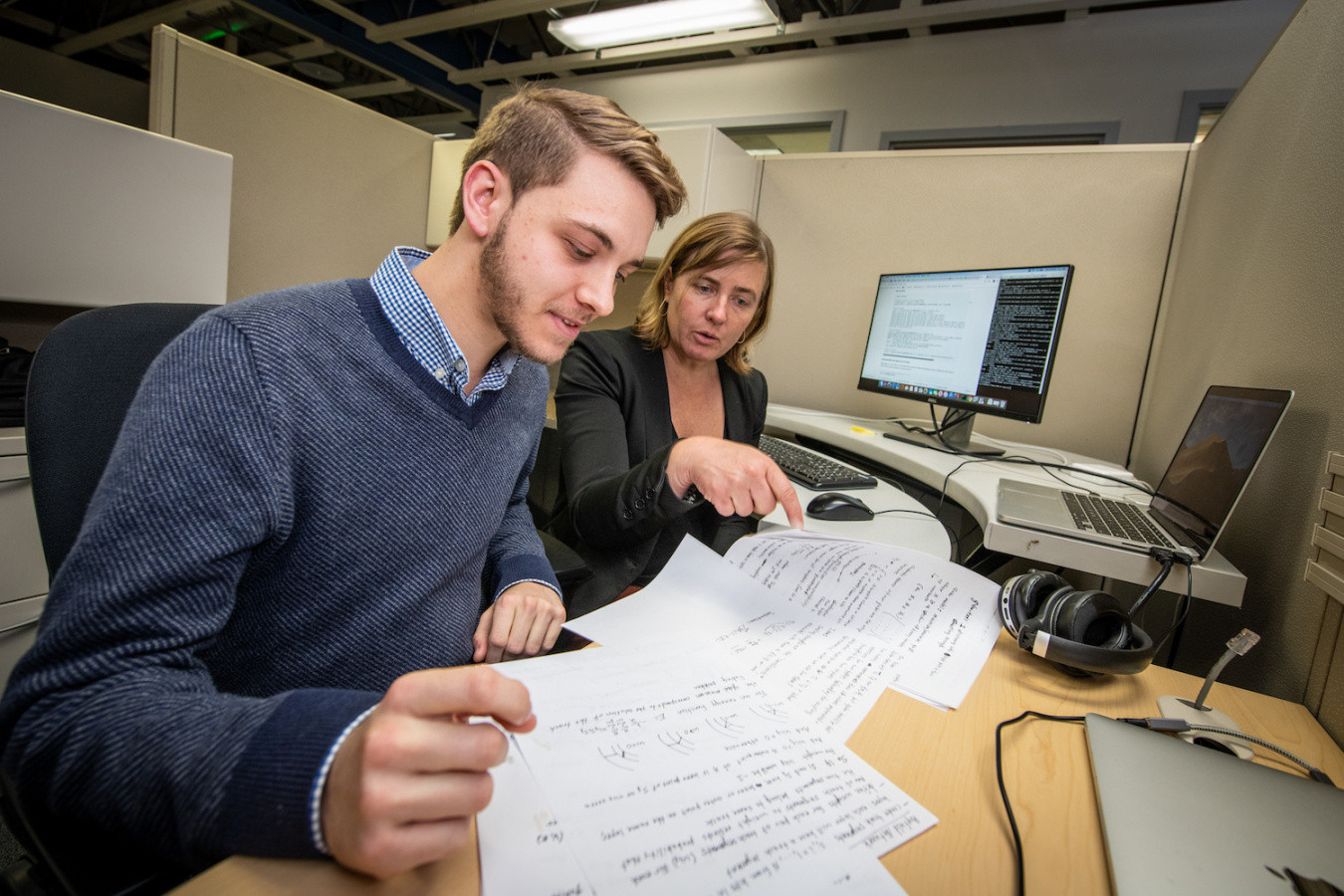Eric Rohm uses virtual quantum computer to test quantum algorithm.
January 31, 2020
Editor's note: this article was originally posted on Lawrence Berkeley National Laboratory's website.
If you study the detector readout shortly after a particle collision at CERN’s Large Hadron Collider (LHC), “It looks like somebody fired a shotgun at a target,” said Eric Rohm, a physics researcher from the University of South Carolina who spent August 2019 to December 2019 working on a quantum-computing project at Berkeley Lab.
“There are lots of ‘hits’ where charged particles have deposited some energy along their trajectories into various layers of the detectors.”
He added, “Maybe this hit is on the same track as that one. That’s the goal of tracked-pattern recognition: to find which hits comprise the path of a particle. And that’s a really interesting task.”
With the planned upgrade of the LHC, this seemingly scattershot picture will only become more complicated, with more noise and unwanted particle “pile-up” to sort through in the collision data.
“The number of hits will go way up, and we’ll have to have more advanced methods” for identifying and tracing meaningful particle paths through the detector, Rohm noted.
While pursuing his bachelor’s degree in physics, Rohm worked on particle physics experiments including Belle II in Japan, which is designed to study the properties of heavy particles known as B mesons; and CUORE in Italy, which seeks a never-before-seen signal that could clue us in to whether ghostly particles called neutrinos serve as their own antiparticles, and could also yield useful information about the matter-antimatter imbalance in the universe.
While these experiments gave Rohm first-hand experience with particle experiments and data, “I had absolutely no experience whatsoever in quantum computing,” he said. “It’s such a new, blossoming field that there are really not that many people applying it to particle physics yet.”
The three-month internship at Berkeley Lab last year exposed Rohm to this fledgling field. He began to read up on quantum-computing approaches, and he found some guidance in complementary work by Lucy Linder, who also worked at Berkeley Lab to apply quantum-computing techniques to particle-track reconstruction.
“Lucy’s work is really the basis for my formulation,” Rohm said.
He was pursuing the application of a hybrid technique that involves both quantum and conventional approaches, known as a QAOA – a quantum approximate optimization algorithm. The algorithm involves some back and forth between classic calculations and those performed by a quantum device in attempting to solve problems. “It takes advantage of beneficial aspects of both quantum and classical solving,” Rohm noted.
He used a software program that – based on a set of simulated particle-track data for the planned LHC upgrade known as TrackML – produced data in a binary format (ones and zeros) that could be prepared using classical calculations and then ported to a quantum device.
While initially Rohm had studied a type of quantum computer known as a quantum annealer, about halfway through his internship he turned to another type of quantum machine built by Berkeley, California-based Rigetti computing, because the architecture of Rigetti’s quantum device is compatible with handling QAOAs.
Rohm worked with a Rigetti Quantum Virtual Machine, which simulates the performance of a small quantum computer on a conventional computer. He is still working to refine the algorithm he designed, and ultimately it can be tested on an actual Rigetti Quantum Processing Unit, he said.
In the final weeks of his internship, a new software package was released that is specifically designed to help solve problems on the Quantum Virtual Machine that are formatted as a QAOA.
In his continuing work, Rohm said he is seeking ways to size up the QUBO he constructed to represent a far larger dataset. “I’m still trying to figure out that sizing problem,” he said.
Rohm said that, based on a study by its inventors, QAOA shows a lot of promise for achieving “quantum supremacy,” or eventually outperforming conventional computers in solving certain problems. He also noted that the field of quantum computing is still so young, and it’s tough to say which technologies and methods will prove to be the fastest and most efficient through continuing development.
“Projects like this prove to the skeptics that this idea of quantum computing for particle physics is not so crazy. It’s more practical than you think,” he said. “We now have quantum machines and they work; they’re just pretty noisy. When you try to make them more powerful, that’s an issue.”
Rohm said he is grateful for the opportunity to be a part of this emerging field at such an early stage.
“I came into this with just a bachelor’s degree in physics and had no experience in quantum computing,” he said. “With the right guidance, I was able to make some pretty good progress.”
Click on a name below to learn about other research projects in quantum computing by early-career researchers at Berkeley Lab:

